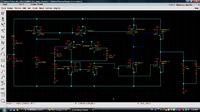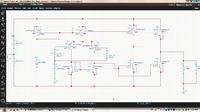ray.deng
Newbie level 6
Hi, I was just trying to find the gain of a differential stage using cadence. It's a two stage op amp, with the first stage of single-ended differential and second stage of common source. While I fix the other parameters and configuration and change the signal voltage input of the differential stage from 10mV to 1mV, the gain is changed from about 40 to 80. Can somebody tell me why? Thanks!

